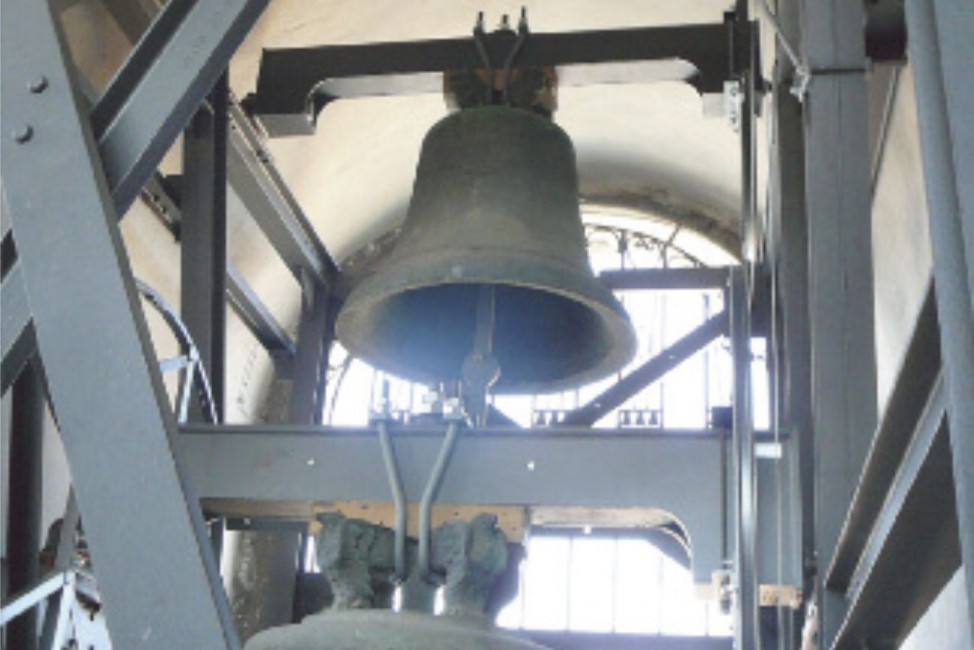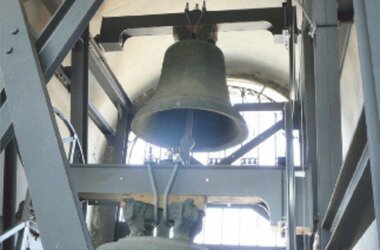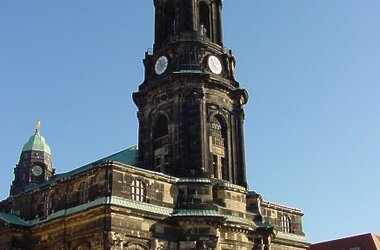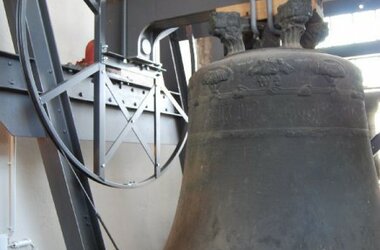Belfry of Kreuzkirche in Dresden restored
The bells of the Kreuzkirche in Dresden had been silent for more than two years - since 9th March 2009. An expert report assessed damage to the steel belfry structure as so serious that the parish community of the Protestant Kreuzkirche expected to have to replace it. The bronze bells weigh ca. 28,5 tonnes and are the fourth largest in Germany, after the bells of Cologne Cathedral, the Münster in Constance and the Stiftskirche in Neustadt.
The bells of the Kreuzkirche in Dresden had been silent for more than two years - since 9th March 2009. An expert report assessed damage to the steel belfry structure as so serious that the parish community of the Protestant Kreuzkirche expected to have to replace it. The bronze bells weigh ca. 28,5 tonnes and are the fourth largest in Germany, after the bells of Cologne Cathedral, the Münster in Constance and the Stiftskirche in Neustadt.
Having survived 110 years of operation through two World Wars and the complete destruction of the Kreuzkirche by fire in 1945, the steel belfry was to be replaced by a timber construction. The planning and replacement process together with the necessary construction measures on the church tower were expected to take around 5 years and cost around 1 million Euros.
After the press was informed about these plans, Prof. Dr. Richard Stroetmann of Krebs Kiefer Dresden took the initiative. He viewed the belfry and held discussions with those responsible for the project. As a result, civil engineering student Lea Kuhnen wrote her diploma thesis for the institute for steel and timber construction at the Technical University of Dresden on the subject of the state of the belfry and possible repairs. Her thesis led to the conclusion that the belfry could be repaired at relatively moderate costs.
When the Kreuzkirche authorities had been informed about this result and the necessary decisions had been made, KREBS+KIEFER Dresden was commissioned to plan the repair project. KREBS+KIEFER subsequently produced the tender documents and supported the contract awarding process as well as checking the engineering solution and supervising the work on site. The necessary repairs included replacement of the crossbeams for the bells, installation of tie bars and plates to stabilize the main struts, replacement of some excessively corroded elements and renewal of the corrosion protection.
The bids from construction firms received in response to the invitation to tender confirmed the repair costs previously estimated by KREBS+KIEFER. Additional oscillation measurements in different stages of operation of the bells were carried out to ensure that no excessive loads would be transferred from the belfry to the masonry of the church. These measurements included the speeds and amplitudes of oscillation and movements of existing cracks.
After the Kreuzkirche authorities had made the decision to carry out the repairs, having received the approval of the Lutheran Church of Saxony, the construction measures were completed within a period of five months up to the end of May 2011. Following restoration of the bell mechanisms and tuning of the bells, the belfry was put into operation during a service of thanksgiving on Sunday 29th May. This meant that the bells were fully operational in time for the 33rd German Protestant Kirchentag which took place from 1st to 5th June.
Based on the estimates given above, repairing the belfry rather than replacing it with a timber construction reduced the period in which it was out of action by around 3 years and reduced to the costs to around a third (330.000 EUR) of what the replacement was expected to cost.



